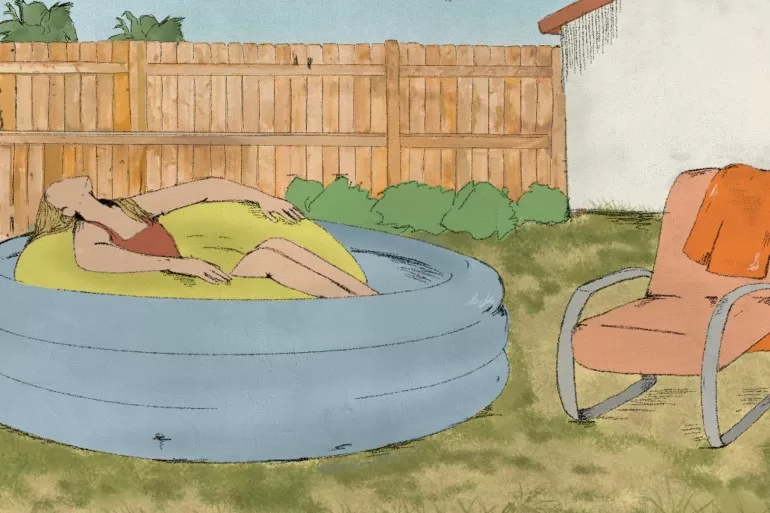I dreamed of the life stretched out ahead of me. I could see it all: the spacious adobe house painted into a sage and cactus-dotted desert with terracotta dirt; the kids trudging to the kitchen, grumpy for breakfast, the aroma of espresso from a new moka pot; the tenured position I’d pounded the pavement for.
Those dreams were dead by lunch.
I ended the day face down, head buried in my dusty grey carpet, shards of the person I’d been that morning. I think of that day now – of that moment – as the great non sequitur of my life; when the world – and myself – as I knew them were irreversibly altered.
That was the day I learned that my husband Stanton, whom I’d left just four months earlier, had died by suicide.
This is the story of how his death shaped my life.
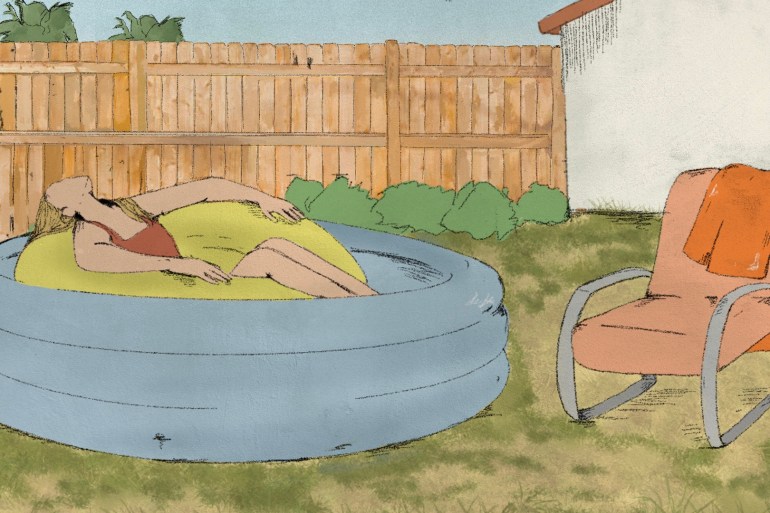
Stanton
While this story isn’t about Stanton, it can’t be told without him.
I used to joke that we’d met on Craigslist. Before moving from England to the United States in the fall of 2013 to start my PhD, I landed on the internet to find housing. I discovered an advertisement posted by a sociology graduate student living in a house with all my desired specifications.
We first spoke on the phone – chatting for more than an hour as we exchanged stories of graduate school atrocities and analysed the supernatural creatures we most identified with. The rapport was immediate. I decided to move into his house.
Sometimes you meet someone who speaks the same language as you, without using words at all. That was what Stanton and I had: an innate understanding. We’d sit on our porch – or with our feet dangling in the pool during the hot summers – talking, from the lilac sky at dusk until there were cracks of light again the next morning. We’d plot innocuous social experiments that we could conduct on unsuspecting victims. He’d tell me about his sociology favourites – Kierkegaard, Marx, and Durkheim and hypothesise about identity theory (the subject of his dissertation) while I’d unpack my thoughts about the fringes of earthquake prediction.
Our different lives and varied interests gradually came together – we inadvertently built the intersection of a Venn diagram. He’d come to sing karaoke at the local biker bar with me; I’d play Dungeons and Dragons with him.
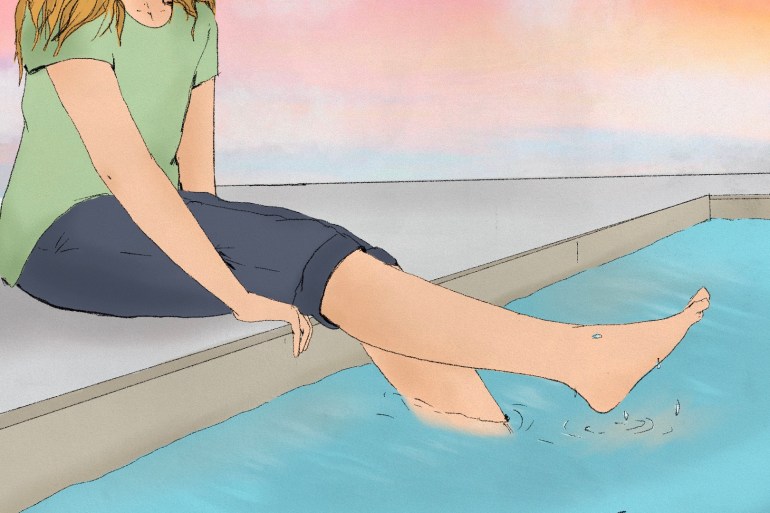
My time with Stanton flowed seamlessly. He was charismatic and deeply intelligent (with a fan club of students who would line up for his office hours, I suspect, just to be entertained). Unlike in other relationships I’d had, my mind never stepped outside of the relationship to analyse it. I was comfortably along for the ride of this budding friendship.
When love entered the picture, it came hard and it came fast. Why not marry your best friend, I thought.
On a whim, at the end of summer, about a year after I moved into his house, we giddily drove several hours across the Mojave and eloped at the Little White Wedding Chapel in Vegas. He wore khakis and his favourite plaid and I wore salmon slacks and a tank top. We bought sterling silver rings at a tourist shop.
We moved out of the house we shared with other PhD students and into a little apartment surrounded by palm trees where we’d spend our nights pretzeled together on the sofa or animatedly debating inconsequential ideas with unintelligible sketches on a whiteboard we bought for that purpose. No topic was too taboo, no opinion was too bold. We were explorers of subject matter.
Life was simple, conversation was gushing, and we were happy.
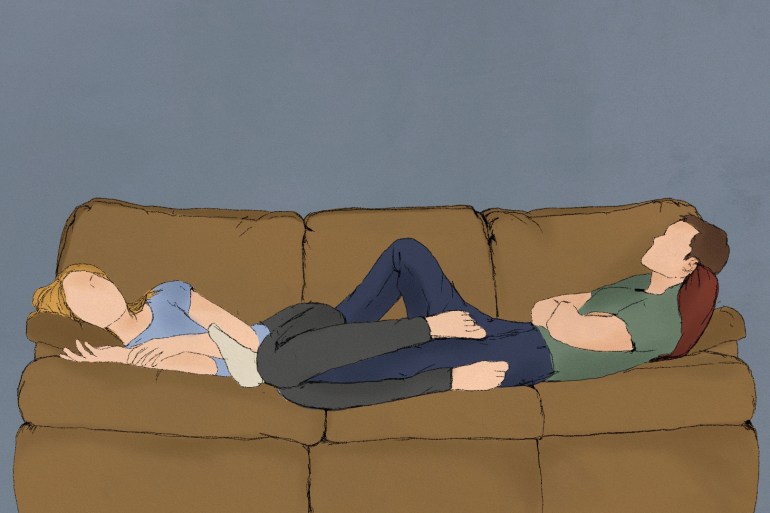
‘As long as I have you’
Stanton was never one to cry. He’d rarely tell me if something was bothering him. He had a diagnosis of generalised anxiety disorder when we met. The Diagnostic and Statistical Manual of Mental Disorders, Fifth Edition defines it as, “excessive anxiety and worry (apprehensive expectation), occurring more days than not for at least 6 months, about a number of events or activities (such as work or school performance)”. He quipped more about the grating side effects of his medication than about his anxiety.
Occasionally, though, something would slip through the cracks. One sweaty afternoon, after we’d walked back from campus together, we sat down on the sidewalk outside our house to share a cigarette.
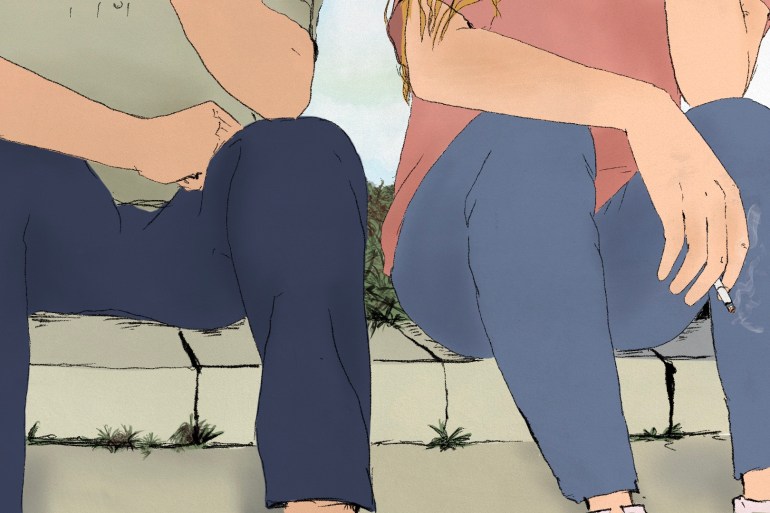
I don’t remember how the conversation got there, but he told me that sometimes he wished he’d get hit by a bus. That way, his death wouldn’t be anyone’s fault. This revelation was so abrupt and matter-of-fact that I almost didn’t grasp it. I couldn’t weigh its gravity. I wrote it off as a deadpan expression of common frustrations with daily life.
Although he assured me he’d never do something like that to his family, I wish I’d probed more. I wish I’d recognised the signs.
They say hindsight is 20/20.
Not long after we married, the actor Robin Williams died by suicide. There was tumult in my gut as I read that news. Like Stanton – whose comedic inclinations never wavered, even in the midst of his battle with anxiety and depression – Williams seemed deeply empathetic and humorous, adept at hiding his pain behind laughter.
“Promise me you’ll never do what Robin Williams did,” I asked Stanton one night as we watched Good Will Hunting.
“I would never, as long as I have you with me,” he replied.
The characters in the room
Though they were part of him, Stanton’s depression and anxiety felt like other characters in the room. At first, they were just like little wallflowers, but after a while, they seemed to fill our apartment.
Stanton’s work on his dissertation dwindled. He lost his funding because he hadn’t finished his PhD within the allotted timeframe. He was passed between therapists at the university but no one seemed to know what to do with him; they weren’t equipped to handle his persistent depressive disorder.
As I witnessed Stanton slip through the cracks, gradually abandoning himself, his energy and focus migrated to me. He’d drive me to and from university – a trip I could easily have walked; he’d walk our two dogs, Wally and Bruiser; and he’d cook me meals of my choosing, no matter how ridiculous my culinary whims. Materially, it was lovely to have so much dedication and support; emotionally, it felt burdensome. As we’d stood in the Little White Wedding Chapel, I’d made the promise to stay through thick and thin. But as Stanton’s depression grew, that promise took on a different shape. I hadn’t imagined it would mean feeling that I was someone’s reason to stay alive.
The night I decided to leave, we were sitting on the curb next to the over-watered lawn in front of our apartment building. We laughed at its absurdity against the backdrop of California’s drought.
Then we sat quietly, looking at the stars.
Eventually, he said, “Nothing makes me happy any more.”
“When you look at the moon, or the stars – or imagine all the possibilities we think about all the time – does that not move you? Do you not see beauty?” I asked him.
“I don’t,” he replied unequivocally. “I’m not like you. I can’t find beauty everywhere I look. You’re the only thing that makes me happy now.”
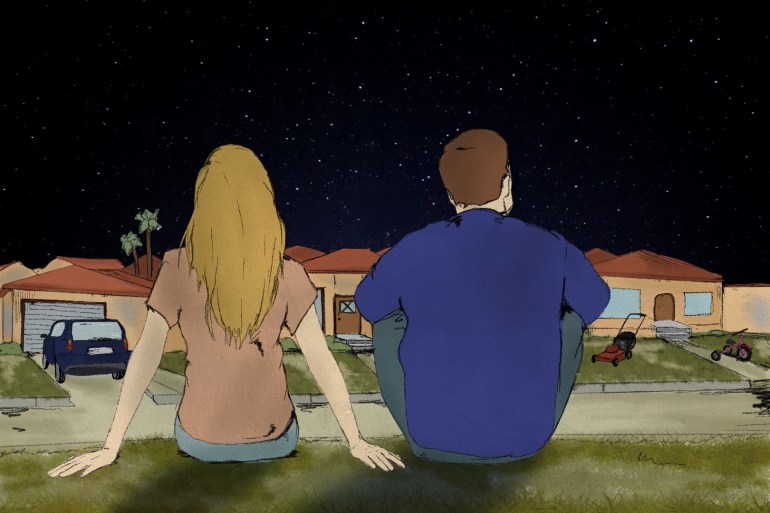
That night, I couldn’t sleep. I worried that if I stayed, I’d be offering a false sense of identity and meaning to Stanton. If I left, I reasoned, I’d be giving him a corridor to find his way back to himself. Life shouldn’t be conditional on having a relationship with someone else; without that relationship, he’d be forced to focus on other dimensions of his life and they’d recover meaning, I thought.
I believed I was doing what was best for both of us. But perhaps subconsciously, it was more than I could handle, so I dressed up my incapacity as a lesson in tough love and fled.
The next morning, Stanton helped me carry my boxes to the car. As we hugged, I pressed my face into his shoulder. When we eventually pulled away from each other, I could see the disappointment on his face.
I drove away with the sense that I was fleeing a scene. It was all so rushed. Wanting to rip off the band-aid, I’d made it that way.
I would give anything now to have taken more time.
Intuition is clearest in hindsight
I moved into a small garden house on the other side of town. Despite my break from Stanton, I stayed on track. I still had big plans for myself. I thought if I just kept up my grind, everything would fall into place.
I’m not sure I’d developed the capacity to be alone, and I started dating someone else relatively quickly. That was how I’d ended up in that kiddie pool that Easter. The new guy I was seeing had bought it to cool down on those unusually hot days in March 2016.
Stanton reached out to meet up. He’d been trying for several weeks, but I’d been hesitant. I wanted to assert my space and thought he needed his. He wanted to see the dogs and talk. We met at a large park near my new house. I could see he wasn’t OK. His hands were trembling and he seemed more nervous than usual.
For the first time, I saw him cry.
After we parted ways, I climbed into the silver Jeep of the lanky redhead I’d been seeing and told him that I was worried that Stanton would kill himself. I told Stanton’s sister-in-law I was worried about him too. I tried to shake it off, but it was a sticky feeling. I revisited the times he’d mentioned suicide in passing or in off-kilter jokes, but it seemed unthinkable that he’d actually do it.
Intuition is a cruel thing.
A week later, when Stanton’s brother called me to ask for the phone numbers of some of Stanton’s friends because he hadn’t shown up for brunch that Easter Sunday, I knew. The calm from my sun-soaked kiddie pool repose immediately vacated my body and I spent the rest of the afternoon sweating, pacing and anxiously biting my nails.
I looked back at some of the last text messages I’d received from Stanton. After I agreed to meet in the park that day, he’d sent a text that said, “After that, you’ll only hear from me in letters.” He meant it. (In addition to writing letters to me and his friends and family, he wrote a letter he wanted read at his memorial service. Read aloud at the service by one of his closest friends, it told others not to blame me, but not without mentioning that there is no pain greater than being left by the person who knows you the best.)
I can’t remember who told me Stanton was dead. The moments bleed together. Everything was revealed like a series of vignettes over the phone: Stanton’s friend recounting that he went to the house and knocked, that nobody answered but the car was there; the police wellness check; someone telling me about a body bag being wheeled out of the place I’d called home just months before; Stanton’s mom crying on the grass outside the apartment.
I crumpled onto the floor and that’s where I stayed. I don’t recall when I got up again.
The intensity of my thoughts and emotions in those moments, ebbing and flowing frantically into each other, was paralytic. I cried hysterically. Perhaps that disabling visceral sensation of being hit by an invisible blunt force of chaos is why people call it shock. After it knocks you to the ground, it’s too unfathomable to grasp.
In those moments, I realised something devastating: How awful it must have felt for Stanton that when he finally did open up to me, I left.
Some questions don’t have answers.
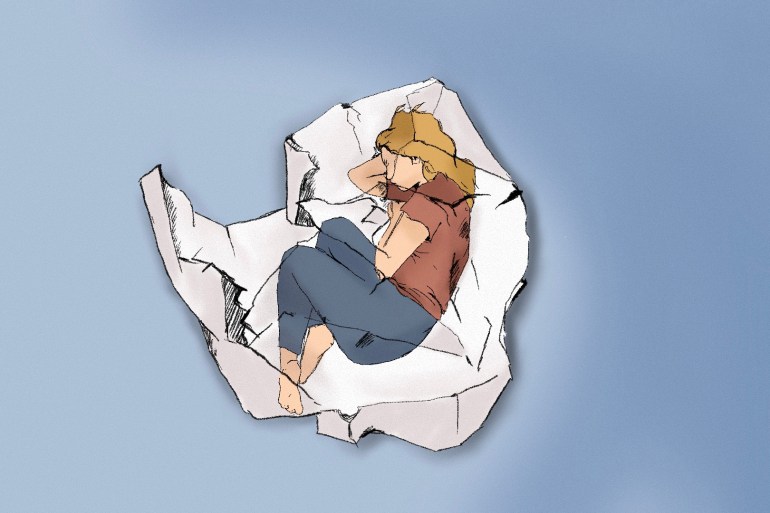
Honnae – tatamae
The aftermath of a suicide – of any trauma – often gives way to a new reality, one that doesn’t fit with what came before it. After Stanton’s death, everything felt heavier. Waking up every day, allowing the world to come into focus, was a Sisyphean confrontation of unfathomable facts.
The same dark thoughts would circulate in the forefront of my mind like a mantra throughout my waking hours. I’d think this was all my fault. Then, I’d feel narcissistic and ashamed for focusing on that instead of mourning Stanton’s death, which would, in turn, make me contemplate the finality of his death and the reality that I’d never see him again, and that would lead right back to thinking that it was all my fault.
Lather, rinse, repeat – and “what you think, you become”, says Gautama Buddha.
My spiralling thoughts ensnared my emotions. Guilt gnawed away at my stomach. Shame pressed down on my chest. I always cast a shadow from the cloud hovering over me.
If eyes are windows to the soul, then anyone who looked into mine could see the seeping wound inside me. Each moment of each day was a delicate balancing act of shame, guilt, devastation and trying to act normal.
At the time, the first thing that seemed to offer stability, the thread that connected the before and after, was seismology. It was all I knew. My colleagues joked that science was easy, it was everything else that was hard.
To keep my PhD funding, I had to teach that semester, so I was pushed back out into the world almost immediately. On the one hand, it kept me distracted, but on the other, I began to masquerade as someone who was not living in the wake of a tragedy. And so began what was probably the longest and most destructive performance of my life.
It’s natural to seek cause and effect, particularly in the case of suicide. People rarely take kindly to the partner of someone who died by suicide, particularly if they left the relationship. They can easily slide into the role of the most logical scapegoat.
There was a palpable bubble between me and everybody else. I assumed the role, sectioning off and wearing my scapegoat scarlet letter. It felt like I was simultaneously being watched and avoided. I observed others as they observed me; curious, but afraid to act.
Caffeine fuelled my charade, so Starbucks was a pitstop each day. I’d silently grow frustrated with baristas simply for asking how my day was. My reality felt worlds away from such a simple question. It was like everything was the same, but I was different and I didn’t know how to navigate across this chasm.
To avoid interactions, I started using the toilets far from my office. One of the first times I didn’t, I emerged from the stalls to find someone who’d been a friend of mine and Stanton’s. She was another PhD student, several years ahead of me whom I’d even considered something of a mentor. She looked at me and I looked at her. I watched the emotion emerge on her face as she turned different shades of pink and then red before she ran for the door in tears. My mere existence had this kind of effect on people.
Several years after Stanton’s death, a seismology colleague at a university I was working at in Switzerland explained the Japanese concept of one’s true inner feelings and experience, honnae, and one’s outward expression of themselves, tatemae. Though these ideas remain without formal labels in Western society, they are innately part of what it means to be human.
Tatamae runs rampant – and though sometimes an appropriate measure for oversharing in certain contexts, in others, it can have a splitting effect. A Japanese friend once told me it’s not uncommon for friends to tell each other, “too much honnae”. It can send the message that parts of us are too disquieting and leave one wondering what to do with the stones that others – even those closest to us – prefer remain unturned.
No one wants to talk about suicide. It makes sense. It’s prickly and sensitive. There is so much stigma attached, so much judgement. Before this happened to me, I viewed it that way too: tremendous pity for the people involved, but a deep discomfort when confronted with it.
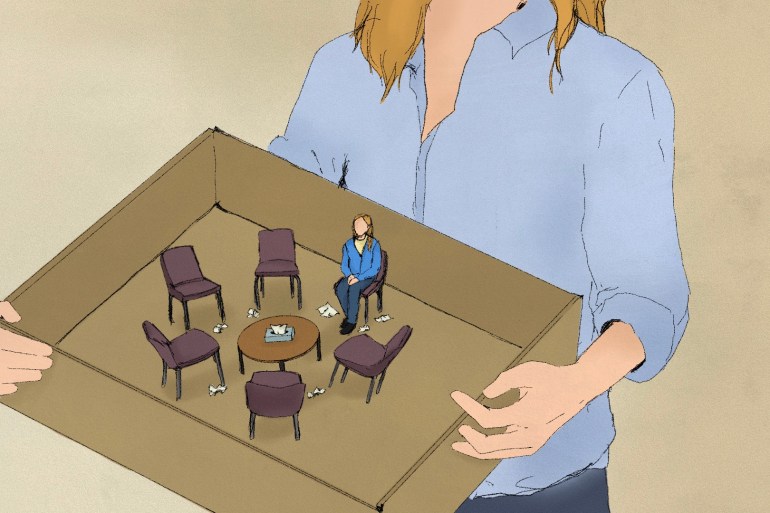
My mom convinced me to join a “survivors of suicide” support group. I was not enamoured by the thought of going, but that container of nondescript white walls and tissue boxes set a precedent I wouldn’t come to appreciate until much later. The only idea of normalcy there was that there is no normal. It was a box for reinvention – where all that mattered was radical honesty, openness and compassion.
There was no shame there. We talked about guilt – not a single person in the room was unaffected by it. We dove into the nuances of grieving someone you’re angry at, accepting the wholeness of a person – a lesson we could also apply to ourselves. It was a place where we could explore the textures of complex grief.
There, it became clear that no one was immune to the reaches of suicide – people from all walks of life were there, and I felt compassion for all of them. I knew in theory I should extend this compassion to myself, but having a thought and internalising it are two different things.
Retrospectively, I wonder if this insurmountable double standard that I clung to was a product of the impenetrable armour of guilt I’d cloaked myself in as an attempt to protect Stanton’s memory – if I took the fall for what happened, it would keep his memory protected.
We have weak spots for the deceased. We want to honour them, respect them, and love them. Suicide complicates that. People who die by suicide are both the victim and the perpetrator of their own death – a difficult paradox to reconcile. It’s easier to outsource blame, or give ourselves a narrative to offer some semblance of closure. Since I failed to help him in life, maybe I could help preserve his memory in death.
That room was the first place where I sewed shut the honnae-tatamae divide. The two hours every week were liberating. They were the only moments I felt light, where my internal monologue wasn’t on full blast. Instead, what was inside came out, and I was just present. Eventually, that feeling would become something of a goal. Aligning my interior with my exterior became fundamental in understanding what it meant to be true to myself, which meant eventually, I’d need to fully allow Stanton’s death into my life.
About eight months after Stanton’s passing, I woke up one morning to a feeling that I was suffocating inside my bubble. The silence between me and everyone else was unbearable (with the exception of a couple of friends who stayed in touch through everything). I decided I’d go into my office and say good morning, as though history had never happened. I thought that maybe this strategy would get the air circulating again.
The very simple act of offering a nonchalant morning greeting crystallised my method-acting performance. My mask was superglued on.
In favour of a more liveable day-to-day, I locked away the broken parts of me and threw away the key.
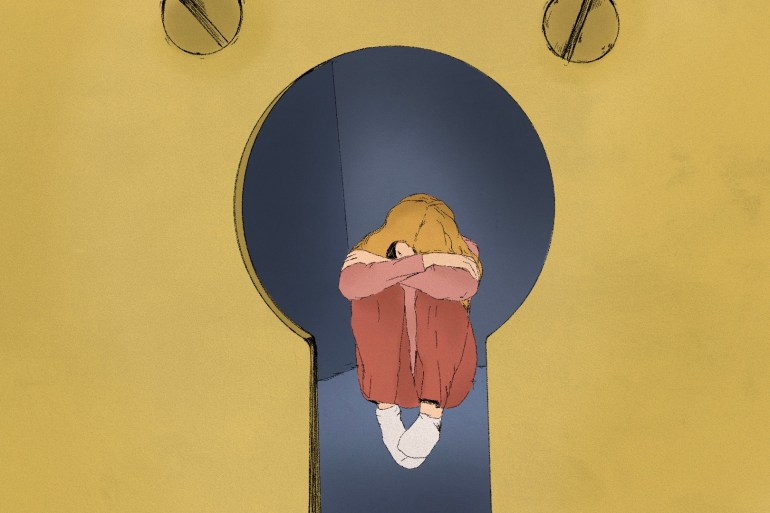
Rooted in hell
After a year and a half, I left the US for postdoctoral work in Europe, spending time in Paris and Zurich, the Côte d’Azur and Rome. From the outside, my life was enviable. But even walking my dogs next to Picasso’s castle along the turquoise Mediterranean or commuting past the Colosseum to a job I’d spent years working towards could not distract me from the discomforting cacophony I’d fall asleep to each night.
My internal world was cavernous and unlit. I had no idea how to unpack what was hiding in those caves, let alone integrate it all with the life I’d sealed myself into.
Going to work eventually felt like such a grating masquerade, that I resorted to Xanax which, for a time, I quietly grew dependent on. Navigating the intricacies of seismology and academia made me feel like a messy blob trying to fit into a clean square. I needed to express with paint, with words, tears and sounds; equations, code and scientific papers felt constraining.
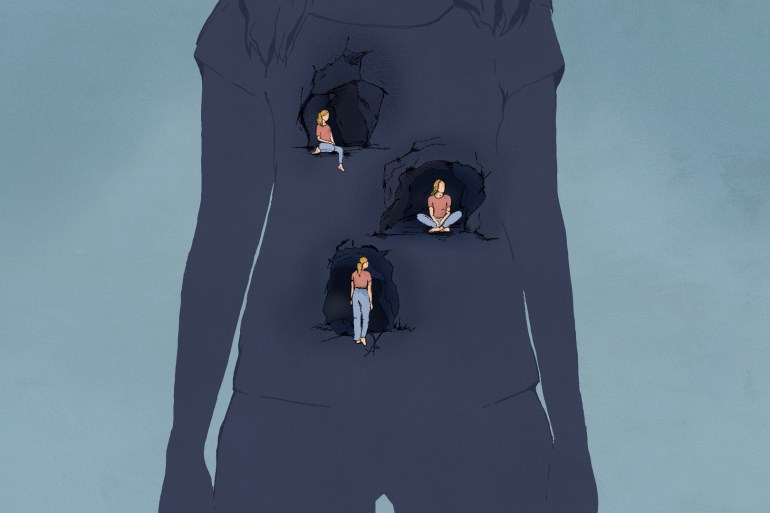
The five-year anniversary of Stanton’s death arrived when I was living in Rome, alone, during the peak of the lockdown. Dusk had settled and I was standing at the edge of an overlook in the Forum of Augustus with my dogs. The connection between my internal and external worlds was in complete disharmony.
Sometimes, I wonder if, in that moment, I literally split into two irreconcilable pieces. My momentum for living was suspended. I questioned whether I was touching some of what Stanton had felt – his complete lack of joy. The idea of jumping from the edge didn’t evoke fear; instead, the thought felt comforting.
But, “No tree, it is said, can grow to Heaven unless its roots reach down to Hell,” declared Carl Jung.
Though I didn’t know it at the time and couldn’t see much beyond the opacity of my depression, I’d eventually come to understand what he meant. Little by little, unexpected moments offered glimmers of hope and understanding.
Temet nosce (know thyself)
One night, after the pandemic-mandated curfew, I found myself alone in front of the Pantheon. Usually eclipsed by swarms of people, it became dystopian. But it was also hypnotic and insisting, standing silently against the velvety night sky.
Beneath this grand dome of antiquity, once a place to honour the Gods, I found myself confronting the vastness of existence and my own infinitesimal place within it. A scene just for me – all the fragmented parts of me – as a whole. All my emotions, all my thoughts – the entire mess of me was there with the mess of history. There was so much elegance in all of this complementary messiness. I felt awe in the midst of such chaos and my place in it. I lingered there, until I felt tears fall from the sky.
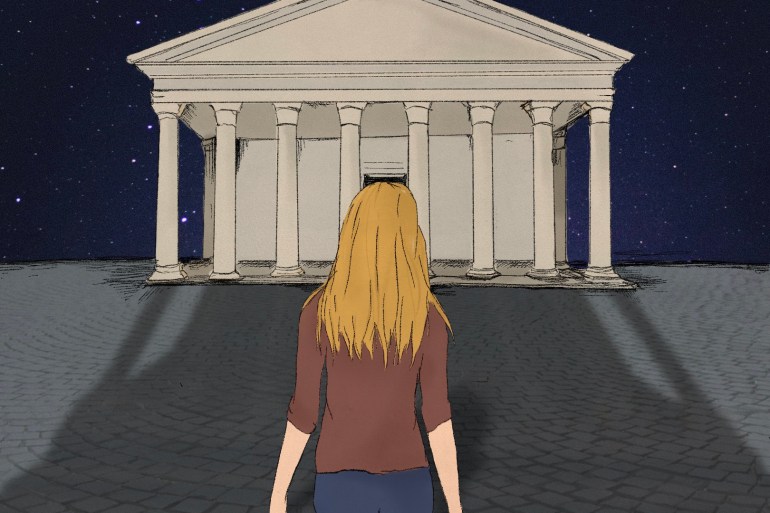
Increasingly, I began to identify these moments when my dissonance would dissolve; organic moments of wholeness, of weightlessness. These moments often cropped up when I found myself alone – something I’d once taken extreme measures to avoid. They were a revelation of my intrinsic inclinations; coming to know what resided within me by way of connecting to the world around me.
As I’d just begun to climb my way out of this pit, I came across a Kierkegaard quote – one of Stanton’s favourites – that I’d scribbled down in a journal shortly after Stanton died. It didn’t seem a coincidence that I found the quote when I did: “Most men are subjective toward themselves and objective toward all others, frightfully objective sometimes – but the task is precisely to be objective toward oneself and subjective toward all others.”
It was time for the paradigm to shift. An echo of Socrates’s “know thyself”. To see the world, I had to see myself first.
It gradually dawned on me that I had been the protagonist of a story that wasn’t mine any more. Maybe it never had been. The White Picket Fence Life. Chapter 29: Move from a studio to a one-bedroom; Chapter 34: Get married; Chapter 48: Have kids: Chapter 37: Get tenure. I was trying to squeeze myself into these pages with a notion that they would offer me security, and that security would keep me shielded from things like Stanton’s suicide. But, they didn’t.
Nothing prevents those things from happening. We never really know what life will throw at us, we can only strengthen our capacity to respond.
I needed to burn that book and write one where I was the author; one that had space for the entire landscape of my experience – internal and external.
Now I was beginning to understand that the place I’d been too afraid to look, inside myself, is where weightlessness and strength came from. To truly know myself, I couldn’t afford to be afraid any more.
Golden thread
I wasn’t sure what the first pages of my self-authored book would look like. But that was the point – they were to be written as they were lived.
As the pandemic was starting to calm, Thailand was opening up to tourists. I packed a backpack and left Rome.
I quit my job.
For the first time in my life, I didn’t know what the next day would look like. Or next year. I had no preconception of what life should be.
For six months, in a tiny bay on an island in the Gulf of Siam – a word-of-mouth kind of place – I was tucked away from roads and tourists with no stores, limited electricity, and a colourful collection of people from around the globe. In this little community, no one could hide anything; there was no point – it wasn’t possible without all the usual distractions from on-the-grid life. A tropical container of people radically living their truths.
Little by little, I exchanged secrets, hopes and poems. I was fortunate to have landed in a pocket of time and space where I could stitch Humpty Dumpty back together again with golden thread.
The fault lines I was mending were my new fingerprints. They were the cracks I’d begun to explore that I finally had the courage to show in daylight.
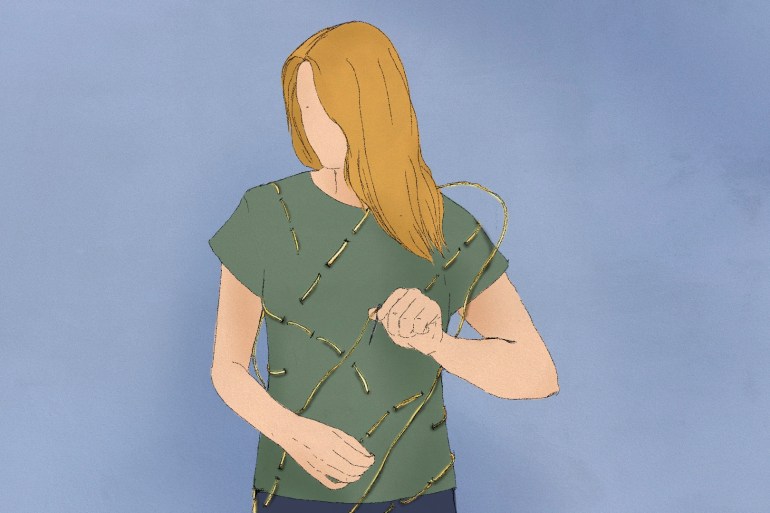
In his reflection on a period of radical living and self-discovery in California’s eclectic central coast, Big Sur and the Oranges of Hieronymous Bosch, Henry Miller says: “One’s destination is never a place, but rather a new way of looking at things.”
What began as my great non sequitur became a catalyst for arriving at a Big Sur state of mind – an understanding that permanency and security are illusions and not my final goal.
While in Thailand, I began to follow what came more instinctually, to pave my own path where I need not worry about hiding away aspects of myself, understanding that each moment is a valuable chapter of this new book.
Six months later, I moved to Portugal, and now I consider myself an explorer above all else. Strangely enough, that is how I connected with Stanton – exploring. It’s been about eight years since that Easter Sunday. In his suicide note to me, Stanton asked that I “live for us both”, and now, I finally am. In a way, I’d never have found myself if I hadn’t lost Stanton – particularly in the way I did. It’s a strange pill to swallow.
We can never prepare for all the possible cataclysms in ordinary instants, but we can prepare ourselves to respond – and we can build who we are from the inside out.
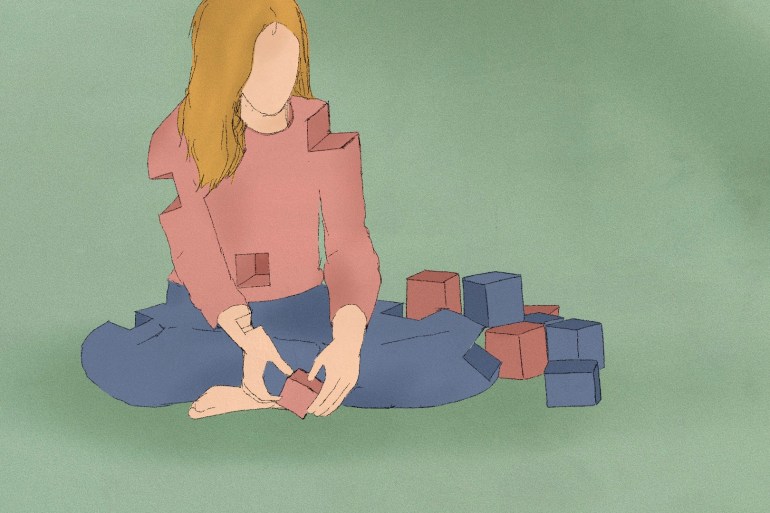
If you or someone you know is at risk of suicide, these organisations may be able to help:
